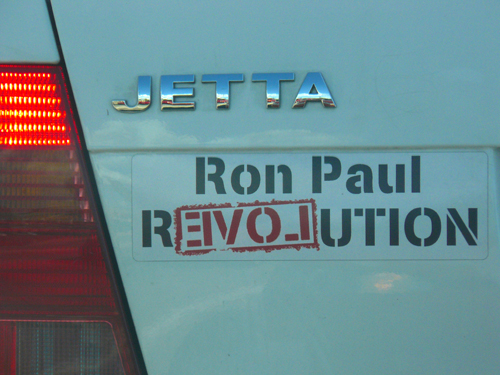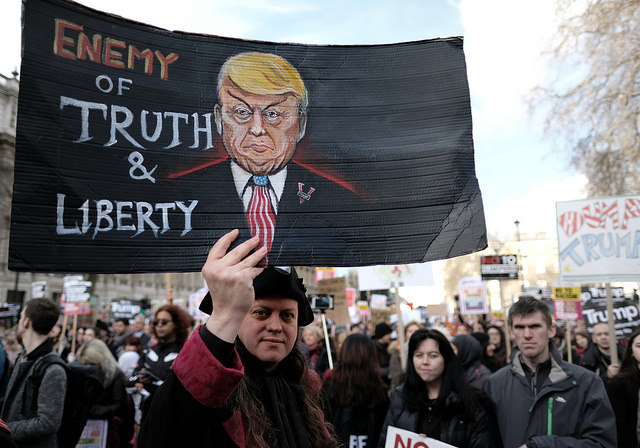I still see a lot of these Ron Paul bumper-stickers on the highway. Introduced prior to the 2008 Presidential election in the United States, they were the most visible manifestation of the grassroots support that garnered him huge campaign contributions in spite of the fact that he never came close to winning the Republican nomination.
As the success of the “Tea Party” movement in the 2010 Congressional campaign reminded us, Paul backers have proven extraordinarily loyal. That’s why his son Rand was elected Senator from Kentucky. It also may explain why many of the bumper-stickers I see look so fresh. Whether they are making it a point to keep them free of grime or ordering new ones to replace the old, fans of his socially conservative, isolationist libertarian ideology clearly have hopes of prodding him towards the 2012 Presidential campaign.
Perhaps the most startling aspect of Ron Paul’s rise to national media sensation in 2007 and 2008 was that so many of his advocates were young. In addition to inspiring strong campus organizations, his campaign also appealed to plenty of young, suburban professionals. He was particularly popular in the high-tech sector, where libertarian values hold considerable sway regardless of whether a person identifies with the Right or the Left.
That’s why this shot is so telling. This particular bumper-sticker didn’t adorn a hulking SUV or an old-school Republican’s Buick, but a Volkswagen Jetta, precisely the sort of vehicle that one identifies with twenty and thirty-somethings who associate the good life with sportiness, imported goods and relatively hip music preferences. While there are surely conservative Christian, right-to-life types who buy VWs, their numbers are small. It’s far more likely that this Jetta was driven by the sort of “crossover” voter that Barack Obama’s 2008 campaign targeted.
On the face of it, there would seem to be almost nothing in common between the supporters of Paul and Obama. One is an icon for extremely limited government, the other identified with massive Federal interventions in the economy and health care. One has ties to the white-supremacist heritage of the South; the other is the nation’s first African-American President. One is resolutely opposed to the United States getting involved in other countries’ affairs; the other drew bigger crowds while touring other nations during his Presidential run than other American politicians were able to generate back home. But for all their obvious differences, both men ran as outsiders whose brand was managed like a highly successful advertising campaign.
I was struck by how many of the college students I was teaching back in 2008 said they were deciding between Obama and Paul. Their inchoate longings took root in the conviction that the government they had grown up with had almost nothing to offer them and had to be shaken to its core. In the end, it didn’t matter that much to them whether this destabilization came from the Right or the Left. Indeed, for some of the students I talked to, those old categories left over from the French Revolution had lost all meaning.
Now, as the United States braces for the 2012 Presidential election, which is certain to be filled with ugliness, a strange equilibrium has been achieved. The bloom has been off Barack Obama for quite a while. But now the Tea Party contingent has also lost some of its luster as well, tarnished by the realities of doing business in Washington. Aside from the wealthy, most Americans are no better off than they were four years ago. And the youngest voters have grown more cynical about the possibility for meaningful change within the system, even as the desire for radical transformation still percolates through their thinking about politics.
It would be comforting to think that the selling of the Obama and Paul brands had soured that demographic on the slick demagoguery of Madison Avenue. But the sad truth is that it has become extremely difficult for anyone in the United States, regardless of age, to conceive of politics as anything other than a manifestation of consumer culture. To choose between an oatmeal stout and a lager, an XBox 360 or a PlayStation 3, a Subaru or a VW doesn’t seem qualitatively different from choosing between political figures, whatever their ideological allegiances. There’s always the hope that the next choice of commodity will be the one to perform a makeover on our world. But no matter how much we are willing to buy, what we really need slips through our grasp.





